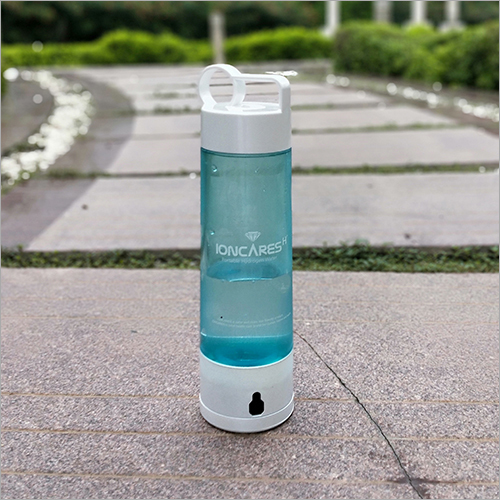In recent years, hydrogen‑infused water has surged in popularity among health‑conscious consumers. For those seeking portable convenience while traveling or working on the go, hydrogen water bottles featuring PEM (Proton Exchange Membrane) technology offer an attractive solution. While many invest in the Best Countertop Hydrogen Water Machine for Home for consistent daily use, portable bottles bring that innovation into daily mobile life.
What is PEM Technology in Hydrogen Water Bottles?
PEM technology refers to a design where a membrane enables efficient electrolysis of water, producing molecular hydrogen (H₂) without unwanted by‑products. In a portable bottle, that means you fill, push a button, and in a few minutes you have hydrogen‑rich water ready. The membrane helps optimize hydrogen generation and minimize ozone or chlorine formation. The appeal is clear: a compact device that transforms ordinary water into hydrogen‑rich water anytime, anywhere.
Key Features to Look For
When evaluating a PEM hydrogen water bottle, consider the following features to ensure quality, usability, and durability:
- Hydrogen concentration (ppm or ppb): Higher levels mean more dissolved hydrogen. A good bottle may promise around 1.0‑3.0 ppm in a single cycle.
- Battery and charging method: Rechargeable via USB or similar, with multiple cycles per charge.
- Build materials: Food‑grade materials (e.g., borosilicate glass, stainless steel, BPA‑free plastics) ensure safety.
- Operation time: How long the electrolysis cycle takes (common range: 3‑10 minutes).
- Maintenance and cleaning: Removable parts, self‑cleaning modes, filter or membrane replacement if required.
- Verification of specs: Transparent claims of hydrogen output and membrane performance bolster trust in the product.
Review of Top Models
Here’s a comparative look at several well‑reviewed PEM hydrogen bottles — each caters to different budgets and preferences:
| Model | Approx Output | Standout Features | Ideal For |
|---|---|---|---|
| Model A | ~3.0 ppm | Premium build, self‑cleaning, compact size | Daily personal use, high spec |
| Model B | ~1.8 ppm | Mid‑tier price, USB recharge, decent capacity | Everyday convenience |
| Model C | ~1.0 ppm | Budget entry‑level, simpler build | First‑time users dipping in |
| Model D | ~2.5 ppm | Larger capacity, robust battery, dual mode (cold/hot) | Fitness/travel enthusiasts |
| Model E | ~1.5 ppm | Lightweight, minimalist design, good portability | Office or travel carry |
Each of these models offers the core benefit of PEM technology: reliable hydrogen generation in a portable form. The differences lie in build quality, output concentration, and extras like cleaning modes or capacity.
User Experience: Pros and Cons
Pros
- Mobility and convenience: You can generate hydrogen‑rich water anywhere — gym, office, car.
- Rapid generation: Many bottles complete a hydrogen cycle in under 10 minutes.
- Improved hydration ritual: For users already invested in hydrogen water at home (via larger machines), the portable bottles ensure continuity in different environments.
- Compact form factor: Unlike countertop units, they go where you go.
Cons
- Smaller volume per cycle: Typical bottle capacity is 300‑500 ml, which is less than what a full home system delivers.
- Maintenance: Electrodes and membranes may require periodic cleaning or replacement to maintain optimal performance.
- Output decline over time/storage: Hydrogen escapes from water once generated; unless consumed quickly, the effective concentration drops.
- Higher cost per liter of hydrogen water: Compared with larger home units, portable models may cost more per milliliter treated.
How to Use Effectively
To get the most out of a PEM hydrogen bottle, follow these best practices:
- Use clean water: Filtered or low‑mineral water allows the electrolysis membrane to perform better.
- Charge the bottle fully before use: Ensure battery and system are optimal for hydrogen generation.
- Start cycle and consume promptly: After the electrolysis cycle ends, drink the water within a few minutes to maximize dissolved hydrogen.
- Maintain the bottle: Regularly clean electrodes or follow manufacturer prompts. Keep the bottle dry when not in use to preserve membrane longevity.
- Travel readiness: If you travel frequently, consider one model dedicated to travel and a separate one at home to avoid wear and tear.
Is It Worth Buying?
If you already use hydrogen‑rich water at home via a larger system (like the Best Countertop Hydrogen Water Machine for Home), a portable PEM bottle makes sense for continuity on the move. It bridges the gap between home convenience and mobile flexibility. If you’re new to hydrogen water, a good‑quality portable PEM bottle can be a cost‑effective entry point. Just ensure you select a model with verified performance rather than relying solely on marketing claims.
FAQ
Q1: Does a higher ppm always mean better performance?
Not always. While higher ppm suggests more hydrogen, the key is consistency, real‑world usability, and how soon you consume the water after generation.
Q2: Can I use tap water?
Yes, but using filtered or low‑mineral water can enhance performance and extend the life of the membrane/electrodes.
Q3: How often should I clean the bottle?
Follow the manufacturer’s schedule—some suggest monthly for moderate use. If you notice longer cycles or lower hydrogen output, it’s time for maintenance.
Q4: Are portable PEM bottles safe?
Yes. When built properly, they are safe for daily use. The membrane systems avoid unwanted by‑products and the materials used are food‑grade.
Q5: Can a bottle replace a home machine?
No. Portable bottles are designed for mobility and convenience, not large‑scale use. For full‑house replacement, a countertop system is more practical.
Final Thoughts
Portable hydrogen water bottles with PEM technology combine cutting‑edge design with convenience. They allow you to take hydrogen‑rich water wherever you go, maintaining your hydration and wellness routine even outside the kitchen. While they don’t match the capacity of a full home system, they complement it beautifully. Focus on verified specs, good materials, and quick consumption after generation. With these in mind, a high‑quality PEM bottle is a smart addition to your hydration toolkit.



